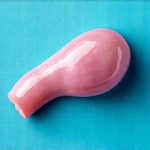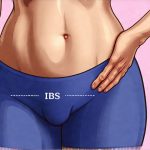Many women who experience Irritable Bowel Syndrome (IBS) also report frequent urinary tract infections (UTIs). This seemingly disparate pairing is increasingly recognized as more than just coincidence, prompting research into the underlying connections between these conditions. For years, both IBS and UTIs were often dismissed or attributed to lifestyle factors, leading many individuals to suffer silently with recurring symptoms. Now, a growing body of evidence suggests that there’s a complex interplay at work – one involving shared risk factors, physiological links, and potential impacts on the gut-bladder axis. Understanding this connection is crucial for improving diagnosis, treatment, and overall quality of life for women navigating these challenging health concerns.
The relationship isn’t necessarily straightforward; it’s not always that IBS causes UTIs or vice versa. Instead, a bidirectional link appears to exist, where one condition can exacerbate the other. This means that experiencing IBS symptoms might increase susceptibility to UTIs, and conversely, frequent UTIs could worsen IBS flare-ups. The underlying mechanisms are multifaceted, ranging from immune system dysfunction and altered gut microbiota to anatomical proximity and hormonal influences. Identifying these connections is vital for developing more holistic care approaches that address both conditions simultaneously, rather than treating them in isolation. This article will delve into the current understanding of this link, exploring its potential causes and offering insights into management strategies.
The Gut-Bladder Axis: A Shared Physiological Connection
The concept of a gut-bladder axis is central to understanding why IBS and UTIs frequently co-occur. For a long time, these organs were considered largely separate systems, but we now know they are intimately connected through neurological pathways, the immune system, and the microbiome. The pelvic floor muscles play a critical role, acting as a bridge between the digestive and urinary systems. Dysfunction in this area – common in both IBS and UTI sufferers – can lead to overlapping symptoms such as urgency, frequency, and pain. Neurogenic bladder, a condition where nerve damage affects bladder control, is often seen alongside chronic pelvic pain syndromes that are prevalent in individuals with IBS.
The vagus nerve, a major conduit for communication between the gut and brain, also plays a significant role. Gut inflammation associated with IBS can trigger signals along the vagus nerve, impacting bladder function and potentially increasing sensitivity to UTI symptoms. Similarly, chronic inflammation from recurrent UTIs can contribute to gut dysbiosis and exacerbate IBS symptoms. This creates a vicious cycle where inflammation in one system fuels inflammation in the other. The microbiome itself is a key player; imbalances in gut bacteria (dysbiosis) have been linked to both conditions. A compromised gut barrier – often called “leaky gut” – allows toxins and inflammatory molecules to enter the bloodstream, potentially triggering immune responses that affect bladder health.
Furthermore, hormonal fluctuations, particularly those associated with estrogen levels, can influence both IBS and UTI susceptibility. Estrogen impacts the vaginal microbiome, which is closely linked to urinary tract health. Changes in estrogen levels during menstruation, pregnancy, or menopause can disrupt this balance, increasing the risk of UTIs. Simultaneously, hormonal shifts can also affect gut motility and sensitivity, contributing to IBS symptoms. This complex interplay highlights why women are disproportionately affected by both conditions. Considering what is the best tea may support overall health.
Inflammatory Pathways & Immune Dysfunction
Chronic inflammation is a hallmark of both IBS and recurrent UTIs. In IBS, low-grade chronic inflammation in the gut contributes to abdominal pain, bloating, and altered bowel habits. This inflammation isn’t necessarily caused by infection; it’s often driven by an overactive immune response to gut bacteria or food particles. Similarly, recurrent UTIs involve repeated episodes of inflammation in the urinary tract, triggered by bacterial infections. However, even after successful antibiotic treatment, some women continue to experience UTI symptoms – suggesting that underlying inflammatory processes persist.
This persistent inflammation can lead to immune dysfunction, where the immune system becomes less effective at fighting off infections and more likely to overreact to harmless stimuli. In IBS, this manifests as increased intestinal permeability (“leaky gut”), allowing bacterial products to trigger further inflammation. In UTIs, it can contribute to chronic pelvic pain syndromes and a reduced ability to clear infections effectively. The immune system’s role is also complicated by the fact that antibiotic use – common in UTI treatment – disrupts the microbiome, potentially exacerbating gut dysbiosis and weakening immune defenses.
- Strategies to modulate inflammation may prove beneficial for women experiencing both IBS and recurrent UTIs. These include:
- Dietary changes (reducing processed foods, increasing fiber intake)
- Probiotic supplementation (to restore gut microbial balance – under medical guidance)
- Stress management techniques (chronic stress can worsen inflammation) Understanding the link between urine and overall health is also important.
The Role of the Microbiome
The microbiome—the vast community of microorganisms living in our bodies—is increasingly recognized as a key player in both IBS and UTI development. A healthy gut microbiome is essential for digestion, immune function, and overall health. In IBS, dysbiosis – an imbalance in gut bacteria – is often present, characterized by reduced diversity and an overgrowth of potentially harmful microbes. This can lead to increased intestinal permeability, inflammation, and altered bowel motility.
The vaginal microbiome also plays a crucial role in protecting against UTIs. Lactobacilli are dominant species in a healthy vaginal microbiome, producing lactic acid that creates an acidic environment unfavorable for UTI-causing bacteria like E. coli. Disruptions to the vaginal microbiome – caused by antibiotics, spermicides, or hormonal changes – can reduce Lactobacilli levels and increase susceptibility to infection. Interestingly, gut dysbiosis can impact the vaginal microbiome; bacterial imbalances in the gut can “travel” to the vagina, disrupting its natural defenses.
Restoring a healthy microbiome is therefore a potential therapeutic target for women with both conditions. Probiotic supplementation (specifically strains targeting both gut and vaginal health) may help restore microbial balance, although research is ongoing to determine the most effective strains and dosages. Dietary changes that promote gut health – such as increasing fiber intake and reducing sugar consumption – are also important. Dehydration and UTIs can impact microbiome balance, too.
Anatomical & Pelvic Floor Dysfunction
Anatomical proximity between the bladder and bowel contributes to the link between IBS and UTIs. The close physical relationship means that inflammation in one area can easily spread to the other. For example, chronic constipation associated with IBS can put pressure on the bladder, leading to urinary frequency or urgency. Similarly, a weakened pelvic floor – common in women who have given birth or experienced chronic straining due to constipation – can affect both bladder and bowel function.
Pelvic floor dysfunction involves impaired muscle coordination and strength, leading to problems with urination, defecation, and sexual function. This can manifest as:
1. Urinary incontinence (leaking urine)
2. Fecal incontinence (leaking stool)
3. Pelvic pain
These symptoms often overlap with those of IBS and UTIs, making diagnosis challenging. Furthermore, pelvic floor dysfunction can contribute to incomplete bladder emptying, increasing the risk of UTI recurrence. Physical therapy focusing on pelvic floor muscle strengthening and coordination is a valuable treatment option for addressing this issue. Biofeedback techniques can also help women learn to control their pelvic floor muscles effectively. Addressing anatomical factors—such as prolapse or structural abnormalities—may also be necessary in some cases. Learning the role of hydration is also key to recovery.
Ultimately, recognizing the complex interplay between IBS and UTIs is essential for providing comprehensive and individualized care to women experiencing these conditions. By acknowledging the shared physiological connections – including the gut-bladder axis, inflammatory pathways, microbiome imbalances, and anatomical factors – healthcare professionals can move beyond treating symptoms in isolation and focus on addressing the underlying causes. This holistic approach promises to improve diagnosis, treatment outcomes, and overall quality of life for those affected by this often debilitating combination of health concerns.





















